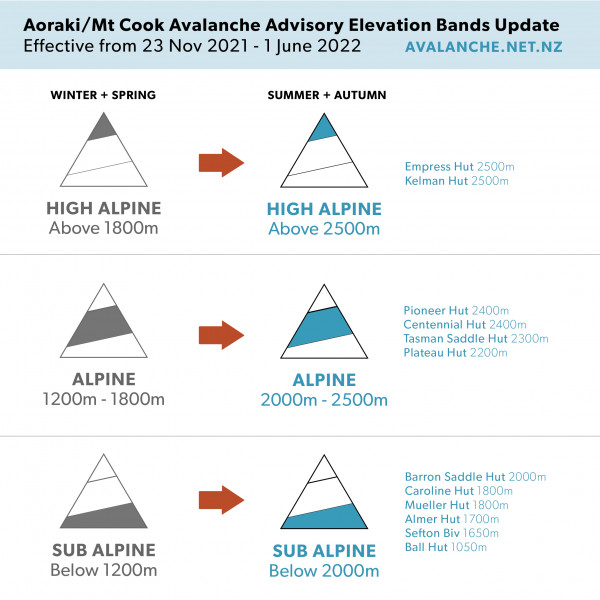NZAA Aoraki/Mt Cook Elevation Band Summer Changes
In 2019 the Mountain Safety Council (MSC) began the practice of changing the elevation bands in the NZ Avalanche Advisory’s (NZAA) Aoraki/Mt Cook forecast region in summer, and reverting to the standard elevation bands in winter. It is now time for this change to come into place for the 2021/2022 summer. This is essential information for anyone recreating in the Aoraki/Mt Cook National Park backcountry over the coming summer.
Why do they need to change?
Aoraki/Mt Cook is the only avalanche forecasting region to operate all year round. These seasonal adjustments to the elevation bands improve the forecast accuracy and applicability for the Aoraki/Mt Cook region over the summer seasons. These changes will allow for a more nuanced forecast over the summer period, allowing forecasters to effectively cater to the wide variety of users at all elevations in the region over this period.
Why has this happened now?
It has been a particularly warm spring combined with lower winter snowfall at lower elevations. This effectively means that the lowest winter elevation band has no snow in it, and so it makes sense to make this adjustment now.
What does this mean for you?
Before you head into the backcountry around Aoraki/Mt Cook this summer, check the New Zealand Avalanche Advisory (avalanche.net.nz) for up-to-date conditions. Be sure you’re taking these refined elevation bands into consideration as part of your planning and decision making. The avalanche danger signage in Aoraki/Mt Cook will also be updated to reflect these changes. The elevation bands will revert to their standard winter settings around early June 2021, unless conditions dictate otherwise. We will communicate when this occurs.
